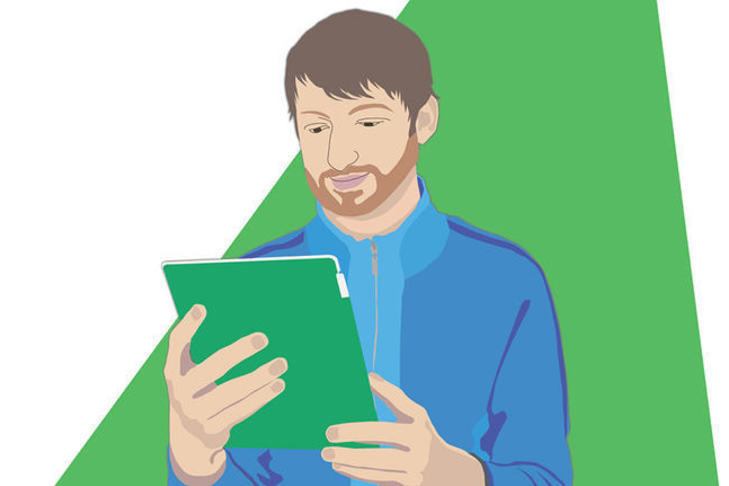Lars, aged 19, was born deaf and learnt sign language as a child. His elder sister, his younger brother and his mother also learnt sign language. Lars can lip read, but is not that confident with his ability to understand all that has been said. His speech is unclear, but his literacy skills are good. He is studying computer science at university.
A day in the life of Lars
Lars uses public transport to get to the university. Metro trains, trams and buses all have screens showing their line number, the next step and the final stop, so he usually has no difficulty getting around the city. However, when there is an emergency stop, the announcement is only made through the loudspeaker and Lars is confused about what is happening.
At university, most of the slides and the writing on whiteboards are good enough for him to understand the teaching. Some lecturers provide text transcripts for him. In big group meetings, the university provides sign language interpreters, but he tends to use written or typed notes and drawing in face-to-face meetings, and chat and e-mail for online collaboration with other group members.
Challenge 1: working with different types of captioning.
Lars enjoys and is confident about using technology. He often watches online videos, but finds most of the automatically created captions are poor and prefers videos with manually created captions.
Like other young people, he mainly uses the Internet for news and TV programs. In the past, he used text telephone or captioned telephone for telecommunication. He can also use TTY relay services to communicate with non-deaf people. But nowadays, he mainly uses SMS, e-mail, and chat applications on his smartphone.
Challenge 2: depending on public information being provided in multiple formats
During the holidays, Lars often takes the train or plane to visit relatives using his tablet to get tickets, time tables etc. Once on the train Lars is fine as long as travel information is given on screen or on the printed ticket. Sometimes the plane does not have in-flight videos with captions, so he reads the safety leaflet which is not always the same as the video.
Challenge 3: finding technology that works well in different settings for different tasks
At home, Lars has a vibrating pillow alarm to wake him up and uses various environmental controls linked to a flashing light such as the phone, doorbell and smoke detector.
Lars is also exploring the use of more apps for his tablet and phone that can support him at home and eventually at work such as FaceTime and Skype for video conversations and transcription services as well as apps that alert one to sounds in the environment.

